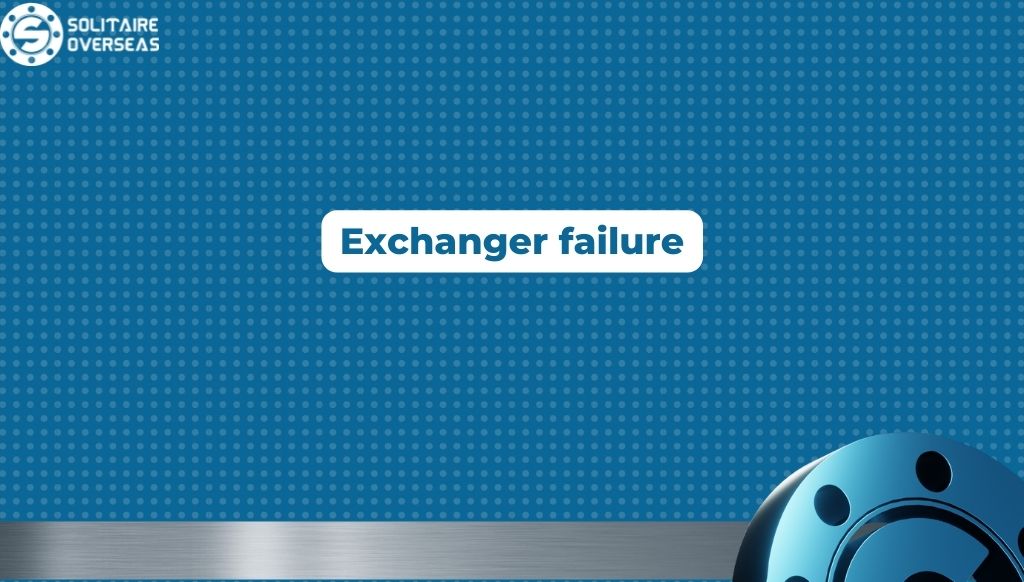Analysis Of Heat Exchanger Failure

Heat exchangers are critical in protecting other valuable manufacturing equipment, reducing energy consumption, and reducing operating costs. A properly installed, maintained, and selected heat exchanger can increase the reliability and efficiency of a fluid system. If a heat exchanger fails, it can cause costly downtime.
The failure analysis of plate heat exchangers, shell and tube heat exchangers, radiators, and coolers is one of our specialties. We offer rapid turnaround on all heat exchanger tube failure analyses, including deposit analyses and microbiologically induced corrosion testing.
We often encounter ‘excessive load’ as the first issue. A change in plant capacity could lead to an increase in the heat exchanger’s load, causing it to be overloaded. When such a load is applied, high fluid temperature differences or even a dramatically higher heat transfer than initially calculated can lead to problems.
Speaking of Heat Exchanger , specialised Heat Exchanger are utilised in proper functioning of Boiler Tube. SA179tube.com Is one leading Manufacturer, Supplier & Stockist Of SA213 T2 Tubes.

The plant may benefit from re-designing the Heat Exchanger in some cases. A successful alternative is to retrofit existing units with technologies like Thermal System turbulators. Plant management should understand that the key benefit is improving processing conditions while avoiding high overhaul costs and reducing large capital expenditures. These are both important to budgeting.
To reduce capital expenditure during revamps, the following will be important.Many processes use heat exchangers to adjust or maintain the temperature of streams and unit operations. Heat-transfer systems are crucial to cost-effective manufacturing, and a failure of a heat exchanger can cause costly downtime.
Shell-and-tube heat exchangers are often used in plants. Properly selected, installed, and maintained, these units can operate efficiently and reliably for a long time.
Causes of Heat Exchanger Tube Failure
Tube Corrosion
Shell and tube heat exchangers that use carbon steel tubes are most vulnerable to corrosion (oxidation) of their heat transfer surfaces.
Most corrosion is caused by the reaction between oxygen (O2) and iron (Fe2, Fe3). As a result of this reaction, a layer of iron oxide (Fe2O3) is created on carbon steel tubes, resulting in decreased thermal conductivity and eventually the tubes deteriorating. As a result, this problem is difficult to combat and is only identified when tubing becomes so corroded that thermal performance levels decrease, fluid flow is significantly reduced or the tubes are perforated and leak.
Stream Pressure Loss
When installing Heat Exchangers in a new plant, it is important to determine their optimal size and operation in order for the plant to function efficiently. Upgrades to sub-sections of the plant may not consider the maximum processing capacity of the Heat Exchanger, resulting in a decrease in plant performance.
Often, excessive steam pressure loss prevents further plant growth at higher production levels. The process plant will need to replace various pieces of Heat Exchanger equipment in order to increase capacity.
It can also result in significant amounts of energy being used to keep Exchangers running – which is not very efficient. Studies of capacity and efficiency of plants can identify the Heat Exchangers that are most economical to replace. It should also be noted that those heat exchangers that were identified can also benefit from installation, as this will increase the efficiency of heat transfer and therefore reduce the steam/utility demand. An in-depth paper covering such examples can be found here.
Scale, Mud And Algae Fouling
Various marine organisms and deposits can leave a film or coating on the surfaces of heat transfer tubes. It acts as an insulator, preventing heat flow and protecting corrosive components. The result of this insulating effect is a rise in tube wall temperatures and an increase in corrosion.
Minerals dissolved in heat transfer fluids precipitate as scale. Changes in temperature or chemical reactions within the heat exchanger alter the solubility of these minerals. Calcium bicarbonate, a common constituent of many waters, releases carbon dioxide when heated. Calcium carbonate is a relatively insoluble compound that precipitates and coats heat transfer surfaces.
The Solution: Experience shows that increasing the fluid velocity reduces the rate of precipitation. Of course, you must match fluid velocity to the tube material’s ability to withstand the erosive effects of velocity.
In one or both of the heat transfer fluids, suspended solids are usually found in the form of sand, iron, silt, and other visible particles. Particles settle out if velocities aren’t high enough to keep them in suspension, resulting in the same problems associated with scale from dissolved solids. Furthermore, many suspended solids are very abrasive to tubing and other surfaces heat exchanger parts. When handling abrasive suspended solids in a heat exchanger, you must keep fluid velocity low enough to prevent erosion.
If they get into the heat exchanger, algae and other marine organisms are a serious problem. Many times, the environment in the heat exchanger encourages their rapid proliferation, which reduces flow and impedes heat transfer.
Chemical algaecides such as chlorine can effectively control algae and other marine organisms; make sure the chemicals used are compatible with the materials of construction. High fluid velocities also discourage their growth.
SA179tubes.com is a leading supplier, stockist, manufacturer & exporter of SA213 T2 Tubes . Get in touch with us for the best rates & availability.
